The magical rags-to-riches tale of Cinderella has captivated children for centuries and inspired generations of happy Christmas memories for families. As panto season approaches and Fairy Godmothers up and down the country prepare to make our wishes come true, we have taken a look at the history of this timeless story in our ultimate guide to Cinderella – from fairy tale to the nation’s favourite pantomime.
- What is the Story of Cinderella?
- The History of Cinderella as a Panto
- Other Adaptations of Cinderella
- How is the Pantomime Different from Other Versions?
- Cinderella Pantomime Characters
- The Most Popular Pantomime in the UK
- Where Can I See the Cinderella Pantomime Near Me?
- How Long is the Cinderella Pantomime?
- How Much Do Tickets for the Cinderella Panto Cost?
What is the Story of Cinderella?
Cinderella is one of the best-known fairy or folk tales, and there are thousands of variations of it across the world. In Europe, Cinderella as we know it is most closely influenced by French writer Charles Perrault’s 1697 collection of fairy tales, and the Brothers Grimm collection of fairy tales in 1812.
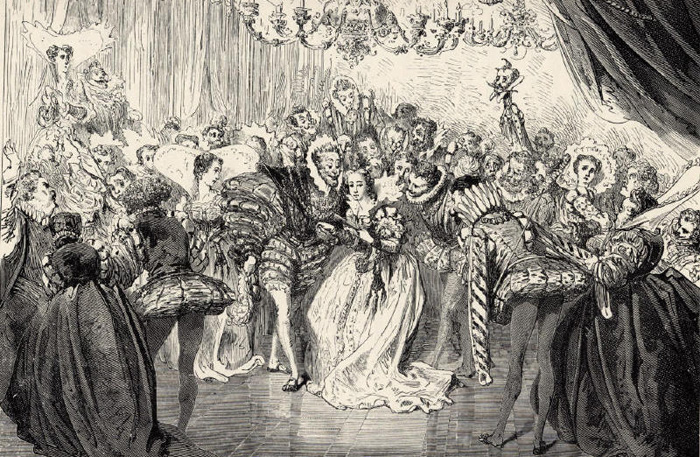
The story begins when Cinderella’s father marries a cruel, vain woman with two equally cruel and vain daughters. They bully Cinderella, who is kind and goodhearted, and treat her like a servant.
Cinderella and her stepsisters are invited to a ball at the palace, where the Prince hopes to meet his future wife. The stepsisters are jealous of Cinderella’s beauty so tear her dress apart before she can attend the ball. A Fairy Godmother appears and transforms Cinderella’s rags into a beautiful gown and glass slippers, and a pumpkin into a carriage. Cinderella can attend the ball but must return home before the clock strikes midnight.
At the ball, the Prince is captivated by Cinderella, but is unable to get her name when she runs away before midnight. She accidentally leaves one of her glass slippers behind, and the Prince decides to visit every eligible young woman in the land. Despite his best efforts, he is unable to find the woman who’s foot fits into the slipper.
At the last moment, the Prince discovers that Cinderella’s stepmother and stepsisters have hidden her away. Like all fairy tales with a happy ending, Cinderella is reunited with her prince and they live happily ever after.
The History of Cinderella as a Panto
The origins of Cinderella stretch all the way back to a common folk tale, in which a mistreated young woman’s fortunes are turned around and she marries into a royal family. Its many variations include The Story of Tấm and Cám (Vietnam), The Tale of Ye Xian (China, 860) and the earliest known oral version, Rhodopis, which dates back to Greece between 7 BC and AD 23.
The first literary version of Cinderella in Europe was Giambattista Basile’s Pentamerone (1634), with other popular versions including the Brothers Grimm’s darker retelling. In their version, the stepsisters cut off their own toes to fit into the glass slipper!
Cinderella today most closely resembles Cendrillon ou la petite pantoufle de verre (Cinderella, or The Little Glass Slipper), from Charles Perrault’s 1697 fairy tale collection Histoires ou contes du temps passé (Stories or Tales from Past Times).
Perrault’s Cinderella, or The Little Glass Slipper
Perrault’s Cinderella (1697) introduced many of the features now considered staples of the story, such as the Fairy Godmother, a pumpkin transforming into a carriage, and the glass slipper. It is a fairly straightforward morality tale which ends with Cinderella rewarded for her kindness and virtue, and her stepsisters and stepmother are the antagonists who beg for forgiveness. In Perrault’s version, Cinderella graciously forgives her stepsisters and arranges for them to marry noblemen.
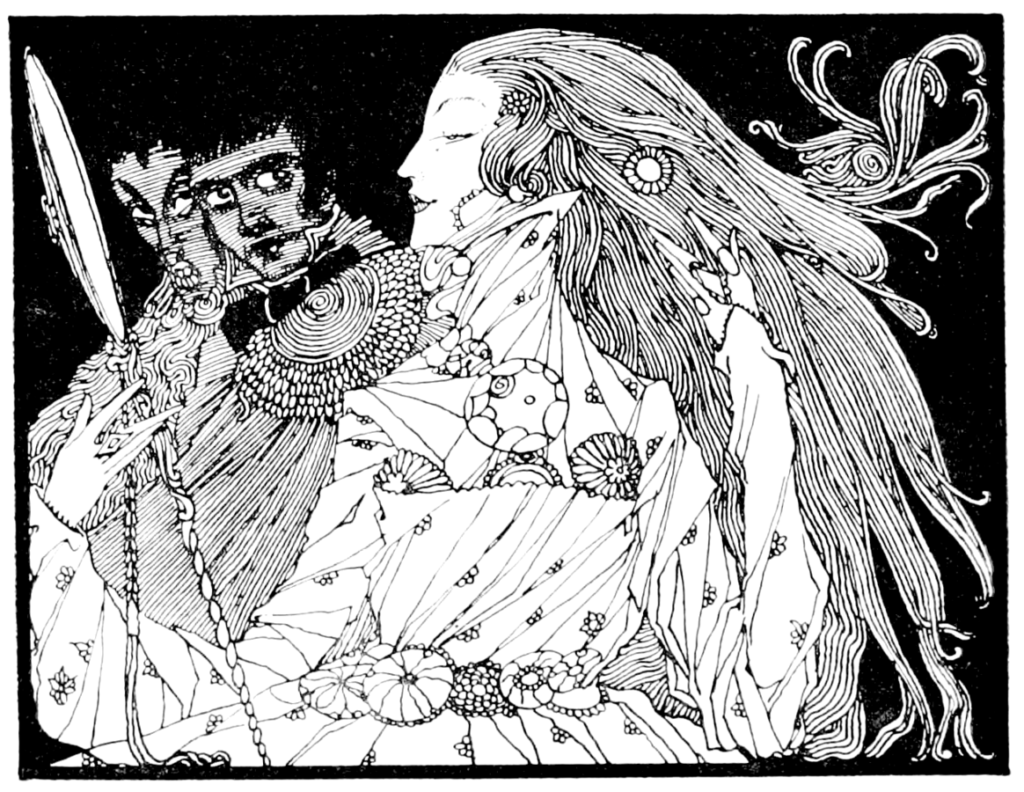
Over the years, some changes have been made to Perrault’s version in other adaptations – for example, his collection of animals transformed into footmen and horses by the Fairy Godmother included lizards, but are now usually mice.
History of the Cinderella Pantomime and Notable Productions
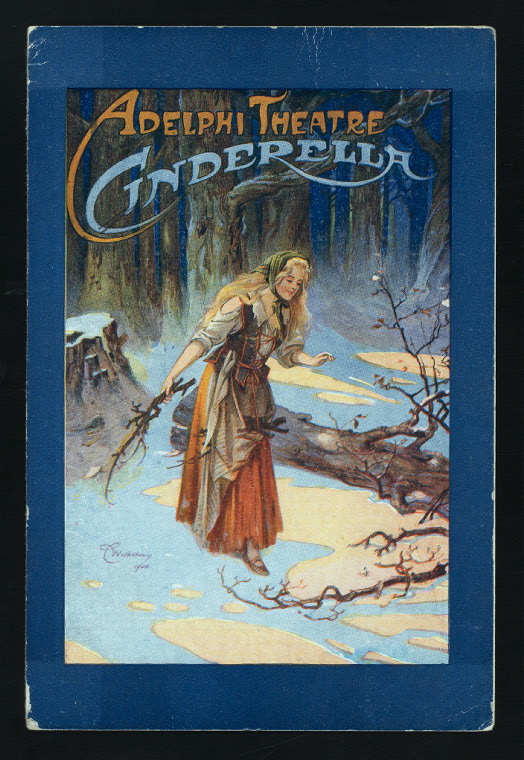
The pantomime version of Cinderella is heavily influenced by Perrault’s fairy tale. It was developed by a series of productions in the 1800s and has become increasingly popular in the 20th and 21st centuries.
Some notable moments in the history of Cinderella as a pantomime are:
1804: Cinderella opened at Theatre Royal Drury Lane, described as “A new Grand Allegorical Pantomimic Spectacle”. This production was not in the same style as modern pantomimes, but it did include some features which carry through today. Famous clown Joseph Grimaldi played a servant called Pedro, a precursor to Buttons.
1820: Harlequin and Cinderella played at Theatre Royal, Covent Garden. It was inspired heavily by Rossini’s opera La Cenerentola. This was not the same as a modern pantomime, but made heavy use of the harlequinade sequence (an early influence on the genre) and starred Grimaldi as the Baron’s wife.
1830: Michael Rophino Lacy used Rossini’s music mixed with spoken dialogue to create a comic opera version of Cinderella. It included the Baron, stepsisters, comic sidekick and a Fairy Queen.
1860: Henry Byron used burlesque and rhyming couplet conventions to transform Lacey’s comic opera into Cinderella! Or the Lover, the Lackey, and the Little Glass Slipper at Theatre Royal. This was the birth of the modern Cinderella pantomime. Characters such as the Ugly Stepsisters came to the forefront in this production.
1958: A pantomime version of Rodgers and Hammerstein’s Cinderella musical was staged at the London Coliseum, starring Yana as Cinderella, Tommy Steele as Buttons, Jimmy Edwards as the Baron, and Kenneth Williams and Ted Durante as the Ugly Sisters.
2000: Broadcaster ITV presented a televised panto performance of Cinderella, filmed at the Brixton Academy. It has been rerun on television numerous times since its initial broadcast date, along with other ITV Pantos. The cast included Samantha Womack as Cinderella, Frank Skinner as Buttons, Siân Phillips as Evil Baroness, Ronnie Corbett and Paul Merton as the Stepsisters Griselda and Lucretia and Julian Clary as Good Fairy.
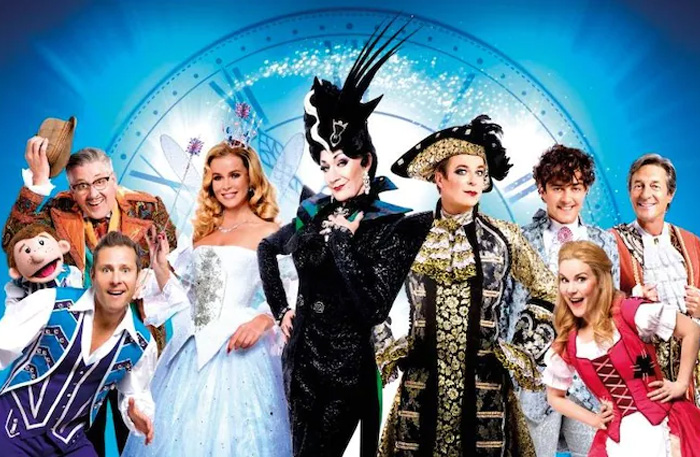
2016: Cinderella’s huge popularity made it the perfect choice for the revived Palladium Pantomime, which returned to the West End in 2016 after a 29 year absence. The production starred Amanda Holden as the Fairy Godmother, Paul O’Grady as the Wicked Stepmother, Julian Clary as Dandini, Lee Mead as Prince Charming, Paul Zerdin as Buttons, Nigel Havers as Lord Chamberlain and Count Arthur Strong as Baron Hardup.
Other Adaptations of Cinderella
Cinderella has been a very popular fairy tale for centuries, and has inspired a huge number of retellings across all forms of media. Some major film and stage productions from the 20th and 21st centuries include:
Rossini’s La Cenerentola Opera (1817)
Italian composer Gioachino Rossini’s opera is based on Perrault’s version of Cinderella. Rossini made some changes to the story: the wicked stepmother became a stepfather called Don Magnifico; the Fairy Godmother became a philosopher called Alidoro, and Cinderella’s slipper became a bracelet. Rossini’s opera inspired later stage versions which eventually transformed into pantomime, and continues to be performed at opera houses and festivals across Europe.
Prokofiev’s Cinderella Ballet (1945)
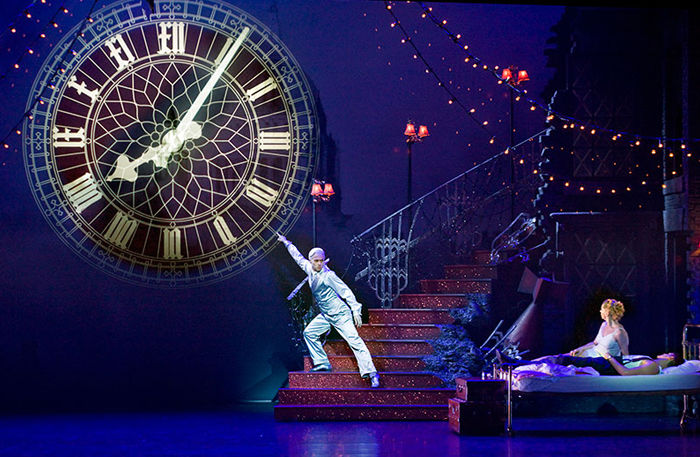
Russian composer Sergei Prokofiev’s ballet composition has inspired countless choreographers since its premiere in 1945. Among them is Matthew Bourne, who used Prokofiev’s music in his 1997 Cinderella ballet, set in 1940s London. Like the Cinderella pantomime, it is often performed at Christmas.
Disney’s Cinderella Animated Film (1950)
The Walt Disney Company’s animated feature film is one of the most famous versions of Cinderella. It is the main introduction to the story for many young children in English-speaking countries, and features original music and comic moments. One of its more unique interpretations comes at the end, when the glass slipper is shattered and Cinderella proves her identity by producing the matching shoe.
Rodgers and Hammerstein’s Cinderella Musical (1958)
Rodgers and Hammerstein’s musical was made for television but has also been performed in London and on Broadway. Its stage premiere was at the London Coliseum in 1958, as a Christmas pantomime production which included extra songs from Rodgers and Hammerstein’s musical Me & Juliet.
Andrew Lloyd Webber’s Cinderella Musical (2021)
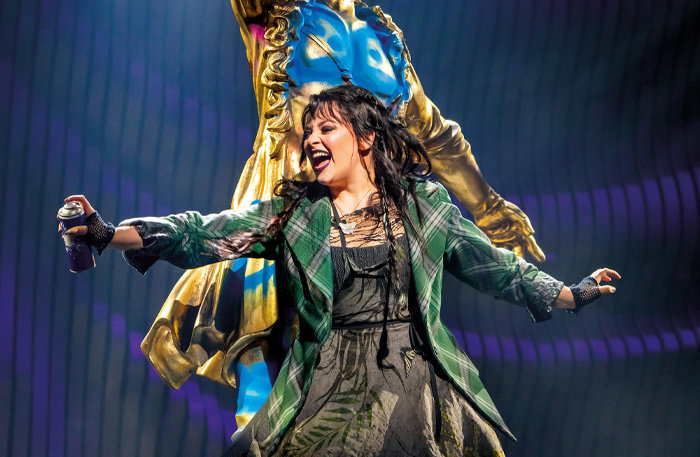
Musical theatre impresario Lloyd Webber produced a modern version of Cinderella which premiered at the Gillian Lynne Theatre in 2021 and transferred to Broadway as Bad Cinderella in 2023. The story is loosely based on the fairy tale, with a strong focus on body and beauty shaming. In this version, Cinderella is tempted to change her appearance to find love.
How is the Cinderella Pantomime Different from Other Versions?
Although the basic story is very similar to other versions, the Cinderella pantomime uses conventions of the panto genre to make it an engaging and fun show for families over Christmas. Some of the biggest parts unique to the panto include:
New Characters
Popular characters such as Buttons (Cinderella’s best friend and a servant at her house) and the Prince’s aide Dandini are unique to the pantomime. Buttons first appeared in Cinderella in 1860 at London’s Strand Theatre. Both he and Dandini are inspired by Rossini’s opera La Cenerentola, which is a retelling of the fairy tale. Dandini and Buttons (or Buttoni as he was originally called) were conceived as sidekicks or aides to the two romantic heroes of the story.
Additional Scenes and Subplots
There are a few extra scenes in the pantomime which act as subplots and comic relief throughout the story. These include Buttons’ unrequited love for Cinderella and the Prince swapping clothes with his aide Dandini in an effort to meet a woman who isn’t influenced by his royal status.
Some versions of the pantomime are re-written much more extensively, with different endings, romances or settings to appeal to modern audiences.
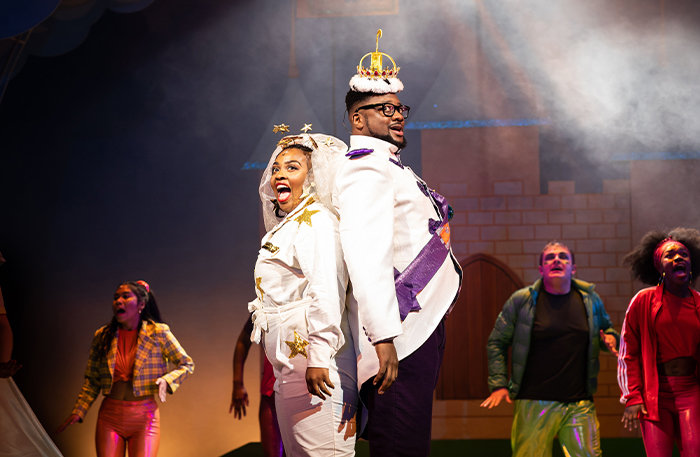
Audience Participation and Humour
Like all pantomimes, Cinderella features lots of songs and jokes which you won’t find in any other retellings of the story. The pantomime genre makes heavy use of audience participation such as shouting out phrases including “he’s behind you!”, booing the villains and joining in to sing along to a pop song at the end of the performance.
The Wicked Stepmother and Ugly Stepsisters are often played as panto Dames, with some adult humour and innuendo included in their lines.
Cinderella Pantomime Characters
Cinderella
Cinderella is the heroine and Principal Girl (or main character) of the pantomime. She is a downtrodden young woman with a big heart, who is bullied and mistreated by her Wicked Stepmother and Ugly Stepsisters. Cinderella is often left to the mercy of her stepfamily because her father Baron Hardup is weak-willed, but her good nature ensures she gets her happily ever after. She has a close friendship with Buttons.
If star casting is used for the part, Cinderella is often played by a young actress, media personality or pop star. She may alternatively be played by a young trained musical theatre actress.
The Prince (Prince Charming)
A handsome and kind prince who longs to meet his true love. He wants to marry someone who loves him for who he is instead of his status. The Prince is the Principal Boy in Cinderella and is often known as Prince Charming. The audience often first sees him in the opening scenes of Cinderella, when he is hunting in the forest with his aide Dandini. The pair swap clothes so the Prince can experience being a “commoner”.
The Principal Boy role has historically been played by young women, but in recent years has also been played by male actors.
Wicked Stepmother
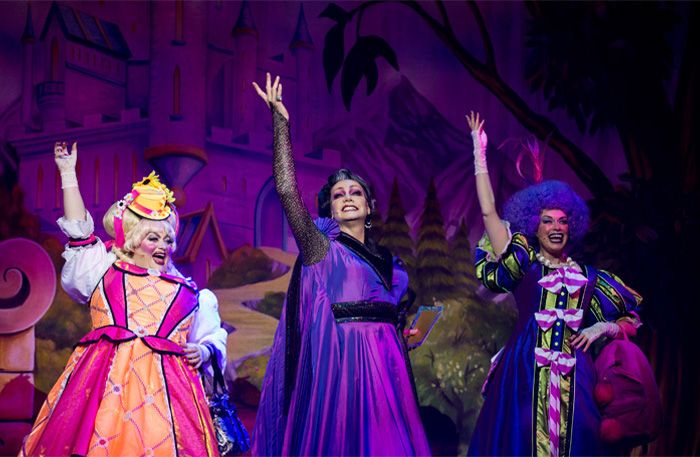
Sometimes known as Baroness Hardup, this is Cinderella’s selfish, cruel and vain stepmother and the Villain of the show. She makes Cinderella do all the chores whilst her daughters are treated like princesses. The Wicked Stepmother is very concerned with status, and wants nothing more than for one of her daughters to marry the Prince and become part of the royal family. She is often dressed in dark clothes, reminiscent of a very glamorous witch.
The Wicked Stepmother is sometimes played as a panto Dame. Stars who have appeared as the Wicked Stepmother include Paul O’Grady and Craig Revel Horwood.
Ugly Stepsisters
Like their mother, Cinderella’s stepsisters are vain and selfish. They would love nothing more than to marry a rich, handsome prince and live a life of luxury. The sisters are also not very bright and often play the role of sidekicks or henchmen for the Wicked Stepmother’s evil plans.
Many Cinderella pantos get creative with the Ugly Stepsisters’ names. They use wordplay such as Petunia and Nasturtium (Petty & Nasty!) or Listeria and Salmonella, or pop culture references. During the height of the Spice Girls’ popularity, they were sometimes called Sporty and Scary, for example.
The Ugly Stepsisters are sometimes played as panto Dames and can also be considered Henchmen for the Wicked Stepmother. In some productions, they are the main antagonists and the Stepmother is not present.
Fairy Godmother
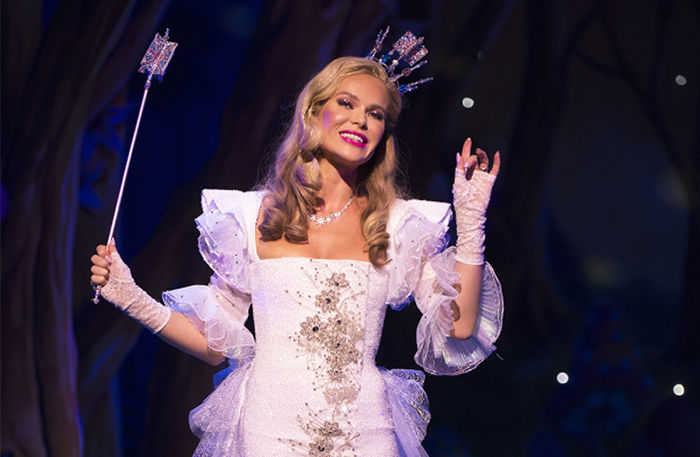
A kind-hearted fairy with magic powers, who helps Cinderella attend the Ball and find her happily ever after. She is responsible for the incredible transformation Cinderella undergoes midway through the show, when he rags turn into a ballgown and a pumpkin is turned into a carriage. The Fairy Godmother wants everyone to get the happy ending they deserve and is the Good Fairy of the Cinderella pantomime.
Actors who have played the Fairy Godmother (or Fairy Godfather) include Bonnie Langford, Amanda Holden, Gok Wan and June Brown.
Buttons
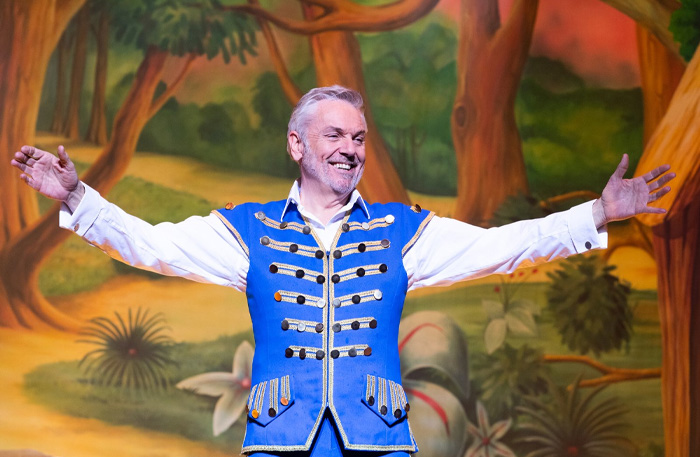
Baron Hardup’s footman and Cinderella’s best friend, Buttons is a cheerful, quick-witted Comic Sidekick. He may quietly pine after Cinderella but really just wants her to be happy. Buttons’ name comes from a 19th century moniker for servants and pageboys, who often had gilt buttons down the front of their jackets.
Buttons has traditionally been played by comedians and light entertainment stars who develop a good rapport with the audience. He is the character who might introduce the show, bring it to a close or encourage the audience to boo, cheer and shout at the right moments.
Performers who have appeared as Buttons include Brian Conley, David Jason, Ben Nickless, Tommy Steele, Shane Richie and Frank Skinner.
Dandini
The Prince’s trusted aide and confidante, who helps him find Cinderella after she runs away from the ball. Dandini was inspired by Rossini’s opera La Cenerentola and like Buttons is a sidekick for one of the principal characters, offering support and comic relief. In the 19th and early 20th centuries, a number of popular music hall entertainers such as Florrie Ford and Alice Wood appeared as Dandini on stage.
Other actors, comedians and media personalities who have played Dandini include Julian Clary, Wendy Richard and Louie Spence.
Baron Hardup
Baron Hardup is Cinderella’s father and husband to the Wicked Stepmother. He dotes on his daughter but is very weak-willed. The Wicked Stepmother and the Ugly Stepsisters have control of the household, while Baron Hardup cowers away from debt collectors.
Other Characters in the Cinderella Panto
Several other characters appear in Cinderella. These include a comedy panto horse – causing all sorts of trouble as the Prince tries to ride off and find his true love! – palace footmen, Cinderella’s cat, townsfolk, servants and guests at the Prince’s ball. In some versions of the pantomime, Baron Hardup is hounded by two Broker’s Men for unpaid rent. The Broker’s Men are often named after politicians.
The Most Popular Pantomime in the UK
Cinderella is often dubbed the “nation’s favourite pantomime” and UK audiences have consistently ranked it as the best pantomime of all time in surveys and polls. Although sometimes coming second to Aladdin, it is indisputably one of our favourite shows to see at Christmas. If you’re wondering “what pantomime near me is on this year?”, the chances are that Cinderella won’t be far away.
So what makes Cinderella such a firm favourite for panto audiences? This rags-to-riches story about a kind, hardworking girl who is bullied and browbeaten by her awful family is one of the most well-known fairy tales in the world and there is a lot of nostalgia attached to it.
A 2019 TicketSource survey of the most popular pantos found that between January 2017 and December 2019, there were an incredible 141 productions of the Cinderella pantomime. It is one of the earliest and most enduring pantomimes, so its staying power has certainly played a part in its popularity.
Where Can I See the Cinderella Pantomime Near Me?
Cinderella is one of the most performed pantomimes in the UK so you can probably find one close by at a professional or amateur theatre company. Some of the top productions this year include:
Cinderella – Bristol Hippodrome
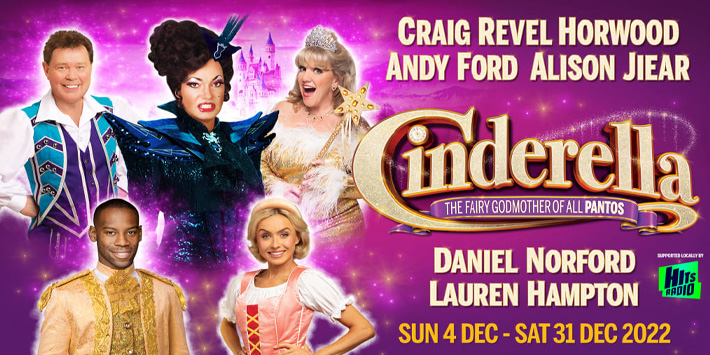
Starring Craig Revel Horwood as the Wicked Stepmother, Andy Ford as Buttons, Alison Jiear as the Fairy Godmother, Daniel Norford as Dandini and Lauren Hampton as Cinderella.
Cinderella – New Victoria Theatre Woking
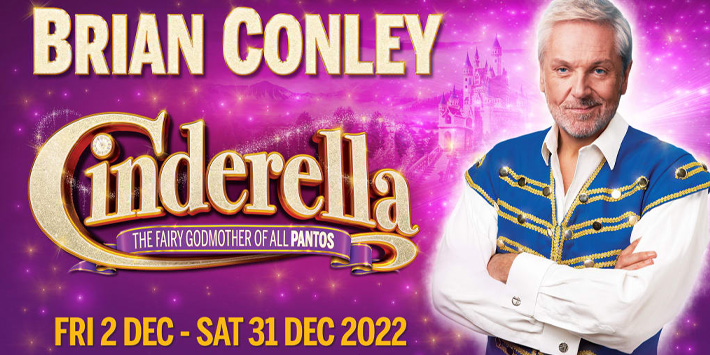
Starring Brian Conley as Buttons. Conley has appeared in Cinderella pantomimes up and down the country 21 times since 1990!
Cinderella – Theatre Royal Newcastle
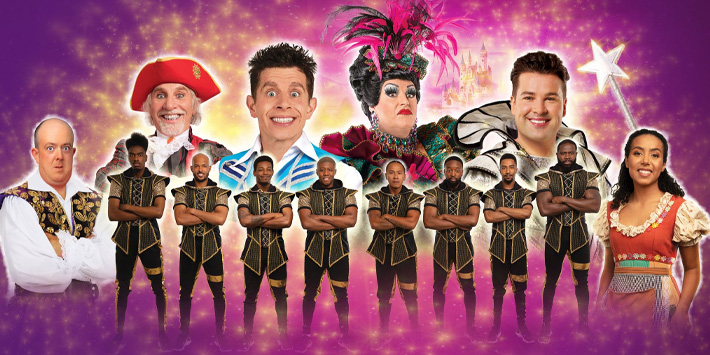
Starring Clive Webb, Chris Hayward and Joe McElderry as the Fairy Godfather.
Find more productions of across the UK in our Cinderella panto listings.
How Long is the Cinderella Pantomime?
There is no set running time for Cinderella because every pantomime is different, but large professional productions often have a similar running time to musicals – around 2 hours 30 minutes.
How Much Do Tickets for the Cinderella Panto Cost?
Many of the big pantos across the UK have prices ranging from around £15 to £60 per ticket, before any concession discounts.
Based on these prices, the average family of four can expect to pay around £100 – £150 for their trip to see Cinderella with mid-price tickets on the most popular dates – weekends and the period between Christmas Eve and New Year’s Day.
There are plenty of cheaper options as well. At some venues, you might even be able to get tickets for as little as £13 each, although you will be sitting further back in the auditorium.
Pantomime tickets often have more discounts than other theatre productions, because venues know the whole family and all ages want to attend together. To make sure you’re getting the best value for the whole family, check the production page and ticket information for :
- Family tickets, usually covering a family of four
- Children’s tickets
- Tickets for ages 60+
- Tickets for key workers such as NHS workers and teachers
Prices also drop after Christmas and the New Year, so if you don’t mind saving a final bit of festive fun for January, book then.
Is Cinderella Your Favourite Pantomime?
Was Cinderella the first pantomime you saw as a child? What are your favourite memories of the nation’s favourite panto? Let us know in the comments.

